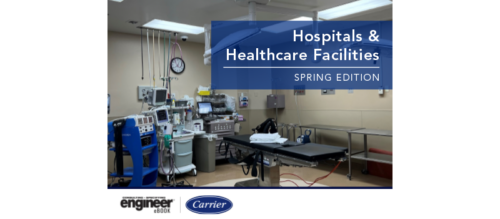IAQ Gets its Day at AHR
SPECIAL COVERAGE: ASHRAE/AHR 2005 Walking the AHR show floor, one could hear lots of numbers and statistics being bandied about: Adults in most developed nations spend 90% of their time indoors; 6% of U.S. adults have asthma and half don't even know they have it; up to 30% of commercial buildings exhibit sick building syndrome; there are no overriding, unified U.
SPECIAL COVERAGE: ASHRAE/AHR 2005
Walking the AHR show floor, one could hear lots of numbers and statistics being bandied about: Adults in most developed nations spend 90% of their time indoors; 6% of U.S. adults have asthma and half don’t even know they have it; up to 30% of commercial buildings exhibit sick building syndrome; there are no overriding, unified U.S. regulations for IAQ. The list goes on.
That being said, it should come as no surprise that there was an abundance of IAQ-oriented products on exhibit at AHR from several different vendors with some unusual players on the scene. Take Everett, Wash.-based Fluke for example. A manufacturer of numerous power quality and temperature measuring tools, the company unveiled its 983 Atmospheric Particle Counter at the show. Specifically designed for industrial hygienists or anyone involved in commissioning or other IAQ tasks, the tool features a six-channel particle size display that measures 0.3
Denver-based Johns Manville, in an interesting demo, pushed its line of modular fiberglass ductboard as an alternative to traditional sheet metal duct. When flexible duct was blasted with tremendous air pressure, the tape-sealed board held its own with no noticeable leaks. The company argues the major benefit of its product is that it substantially increases production on the job site due to its ease of fabrication. JM product managers also claim duct board offers superior acoustic qualities as far as noise reduction, a growing issue in school design.
To back up these anecdotal arguments, Valley Forge, Pa.-based CertainTeed, which offers a similar product, included a brochure, at its exhibit, specially targeted at engineers to explain the IAQ benefits of its new products, particularly its ToughGard 2 duct liner.
“CertainTeed recognized that some engineers have had to either specify thicker duct liner to meet the new energy codes or switch to rotary duct liner,” said Renee Chesler, general manager of HVAC and industrial insulation for the company’s Insulation Group. “We decided to reformulate the product using advanced manufacturing technology so that it would satisfy engineers’ toughest standards.”
Some of the properties the product exhibits, said Chesler, are: thermal and energy savings; acoustics and sound control; moisture resistance; and better cutability.
Richardson, Texas-based Titus was also aggressively marketing the IAQ benefits of its products, even touting potential LEED benefits. Take, for example, its T3SQ thermally powered VAV diffuser, which because of its ability to facilitate individual comfort control, the company claims can help HVAC designers qualify for credit 6 of the USGBC’s indoor environmental quality guidelines. Titus’ press kit also includes a release about its “green” Enviroloc non-fiberglass duct liner.
Also promoting the benefits of its line of IAQ-oriented products was Cincinnati-based United Air, the manufacturer of the “Smoke Hog.” According to a product manager, the company has observed a notable shift in the application of smoke eaters from industrial operations to more commercial buildings including hospitals, college cafeterias and the food court areas of office buildings, particularly in New York and San Francisco.
The major idea, he said, is to shift ventilation away from standard grease duct, instead, venting kitchen exhaust up as high as 20 stories. The system is modular for easy installation and comes with an optional internal wash system for grease build-up. The technology is currently in place in Rockefeller Center.
Do you have experience and expertise with the topics mentioned in this content? You should consider contributing to our CFE Media editorial team and getting the recognition you and your company deserve. Click here to start this process.


